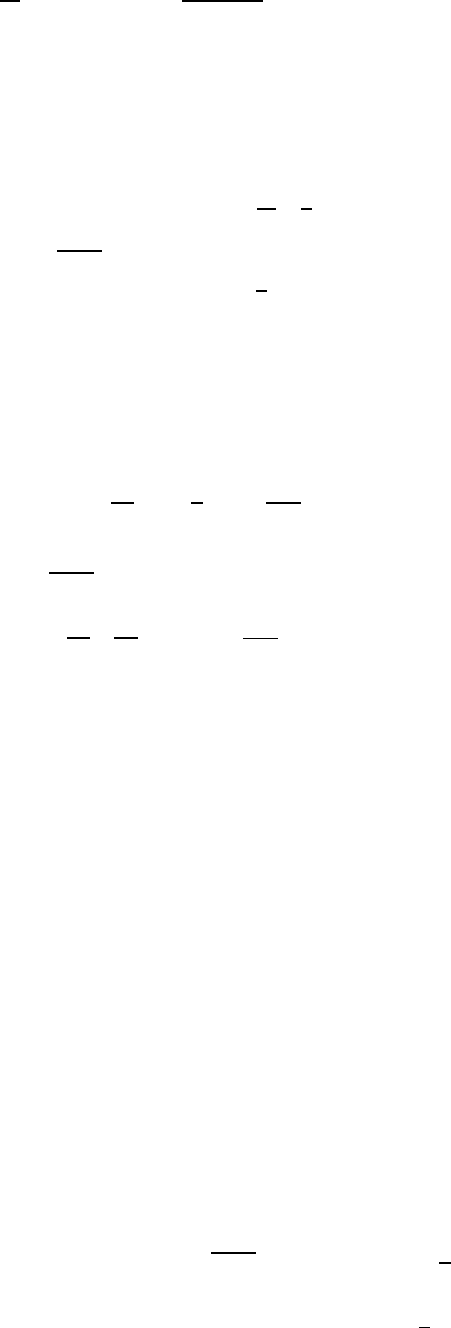European Journal of Molecular & Clinical Medicine
ISSN 2515-8260 Volume 07, Issue 02, 2020
5118
Mathematical Modeling of RLC Circuit Using
Theory and Applications of Kalman Filtering
D. Piriadarshani
1
, M. Maheswari
2
, K. Sasikala
3
, Beena James
4
, N. Daniya Nishi
5
1
Department of Mathematics, Hindustan Institute of Technology and Science, Chennai, India.
2
Department of Mathematics, Hindustan Institute of Technology and Science, Chennai, India.
Department of Mathematics, Anna Adarsh College for Women, Chennai, India.
3
Department of Mathematics, Hindustan Institute of Technology and Science, Chennai, India.
Department of Mathematics, Hindustan College of Arts and Science, Chennai, India.
4
Department of Mathematics, Hindustan Institute of Technology and Science, Chennai, India.
5
Department of Electronics and Communication Engineering,
Engineering, Chennai, India.
1
2
3
4
5
Abstract: In this research article, an application of continuous Kalman Filtering for an
RLC Circuit is presented. In addition of white noise term, the deterministic model of the
circuit is changed as stochastic source and the resultant solution is computed using Ito
formula, which is the charge of the filtering problem for the RLC circuit.
Keywords: Stochastic Differential Equation (SDE), Kalman Bucy Filter, White Noise, Ito
formula, RLC circuit.
1. INTRODUCTION
Real modeling system of ordinary differential equations (ODEs), ignore the notice of
stochastic effects. The differential equations can be change into stochastic differential
equation by adding the arbitrary elements and phrase the stochastic equations [1] which gives
at least one of the terms is a stochastic process, the resultant is also a stochastic process.
SDEs take part in an appropriate role for numerous application areas such as environmental
modeling, engineering, biological modeling, etc. Several researchers used the application of
SDEs to investigate the radar scattering and wireless communications. Field and Tough [2,3]
have efficiently used SDEs in K-distributed noise in electromagnetic scattering.
Charalambous and et al, [4] used SDEs equations to represent multipath fading channels. To
prove SDE model they used Meticulous mathematical analysis and computer simulation
method. A first-order stochastic auto regressive (AR) model is formed directly with the time
variable by discretizing the SDE model. Many researchers have studied in modeling of
electrical circuits which is the major application of SDEs. W. Kampowsky and et al,
illustrated by applying white noise [5] of electrical circuits to classify and numerical simulate.
C. Penski described its application in circuit simulation using new numerical solution for
SDEs with white noise [6]. For modeling a series of RC Circuit using different application of
noise terms using Ito stochastic calculus including numerical solution was proved by T.
Rawat[7].

European Journal of Molecular & Clinical Medicine
ISSN 2515-8260 Volume 07, Issue 02, 2020
5119
However, E. Kolarova proved the applications of stochastic integral equations using RL
Circuits [8]. On the automated formal confirmation of analog/RF circuits employed by R.
Narayanan and et al. The hitch in filtering has an significant branch for the SDEs.
Instinctively, an optimal way of observing the problem is to filter the noise terms. In RC and
RL circuit the deterministic, stochastic model was found [9, 10]. Basically, the filtering
problem based on a series of noisy observations, gives a formula for estimating the state of a
system, which resulting the noisy linear differential equations.
2. STOCHASTIC DIFFERENTIAL EQUATION
A Stochastic Differential Equation is comprised of differential equation that includes a
stochastic process resulting in a solution which is also a stochastic process. Let be the
probability space, and R is a collection of all Y
t
, t P of random variables which represents a
stochastic process with state space and also takes values in R for the Parameter P. If P is
countable, then the process is discrete otherwise continuous. A stochastic process is to
describe the some randomness in an uncorrelated white Gaussian noise.
The general scalar SDE is of the form
(2.1)
where
and
are drift & diffusion
coefficients and is the wiener process.
The integral form of SDE is given by
= x
0
+
(2.2)
Here, the integral ds is ordinary integral and are stochastic integrals.
Let be the solution of SDE (2.1)
Let
x
be a double differentiable function.
The function U(t) = (t, Y(t)) satisfies
=
+
+
(2.3)
where,
satisfies the condition
3. THE THEORY OF KALMAN FILTERING
Suppose
(3.1)
where a and satisfy conditions
For some constant K, M and is white noise.
Theorem3.1: The one-dimensional Kalman Bucy filter
The 1-dimensional solution
of the linear filtering problem
Linear system:
(3.2)
Linear Observation:
(3.3)
which satisfies the SDE
;
(3.4)
where, S(t) =
gratifies the Riccati equation

European Journal of Molecular & Clinical Medicine
ISSN 2515-8260 Volume 07, Issue 02, 2020
5120
=
(3.5)
4. THE DETERMINISTIC MODEL OF RLC CIRCUIT
Every RLC circuit has some finite resistance R, inductance L and capacitance C. Here, Q(t)
represents the charge of the circuit which is a fixed point at time t and U(t) is the potential
source at time t. According to Kirchhoff’s law satisfies the differential equation
+ + L
+
= 0 (4.1)
Where I(t) =
, then
LQ(t) + RQ(t) +
Q(t) = U(t) (4.2)
With initial conditions Q(0) = Q
0
, Q(0) = I
0
.
We introduce the vector form in equation (4.2)
Here X(t) =
=
To the system,
X
1
= X
2
(4.3)
In matrix form,
(4.4)
where A
, K(t) =
,
Using Ito formula
f(t, X(t)) =
(4.5)
df(t,X(t)) = d(
=
(-A) dt +
=
+
=
dt
Integrating, we get,
=
X(t) – X(0) =
X(t) =
(4.6)
which is the analytic solution of equation (4.4)
5. COMPUTATION RLC CIRCUIT WITH STOCHASTIC SOURCE
Now, include some randomness in the potential source
U*(t) = U(t) + noise
U*(t) = U(t) + α(t) (5.1)
where (t) is a white noise process of mean zero and variance one and α is intensity of
noise with non-negative constant.
= AX(t) + K(t) +
=
(5.2)

European Journal of Molecular & Clinical Medicine
ISSN 2515-8260 Volume 07, Issue 02, 2020
5121
Now, Instead (t)dt by dW(t).Usually, for the wiener process W(t), the time derivative is
the white noise.
dX(t) = (AX(t) + K(t)) dt +
dX(t) = [AX(t) + K(t)]dt + cdW(t) (5.3)
where c =
By using Ito formula in equation (5.3), we get,
dh(t,X(t)) = d(
=
(-A) dt +
=
+
=
dt + cdW(t)]
Integrating, we get,
=
+ c
X(t) – X(0) =
+ c
X(t) =
+
+ c
(5.4)
Equation (5.4) is the equation of the stochastic source and also it is a random process. For
every
and
If
, the expectation E[X(t)] = m(t) is the solution of the ordinary
differential equation
Taking the expectation of equation (5.4) we have,
E[X(t)] =
+ E(
+ c E(
Since,
, we get
=
+ E(
(5.5)
For every t 0 and if the random variable X(0) = constant, we get
m(t) = E[X(t)] which is independent of the oscillation part of the SDE.
E[X
2
(t)] =
=
+
Since (
2
]&, we get
E[X
2
(t)] =
+
=
+ c
2
=
[
E[X
2
(t)] =
[
(5.6)
= E[X
2
(t)] – E[X(t)]
2
=
[
2
+
=
(0))
[
(5.7)
Corollary 5.1

European Journal of Molecular & Clinical Medicine
ISSN 2515-8260 Volume 07, Issue 02, 2020
5122
Let
then
Where
=
By corollary 5.1, we have
and
as
. Therefore, the
distribution of approaches to 0,
) as t.
Then, based on the properties of normal distribution, X(t) is a Gaussian process.
For any value of t,
) 1.96*α = 0.95
Using this condition, we are able to compute m(t) and α(t) and we can easily predict the
probability with 95% confident interval (m(t) , m(t) + ), which gives the trajectories of the
stochastic solution.
From Kalman Bucy Filter
Linear Observation: = +
(5.8)
Linear System:
2
(t) =
;
= 0 (5.9)
Here, S(t) =
satisfies the Riccati equation,
, = (X
0
)
2
] = a
2
(5.10)
= M(t)
, S(t) = M(t)
Squaring we get,
2
=
=
2
(t) +
Which is the ordinary differential equation for the function
(t) =
=
(
(
2
(t)
) +
=
2
(t) +
S(t) =
But S(t) = M(t) =
, where v
2
=
The implicit solution is
M(t) = v
Then, S(t) =
= v
However, r =
and for large value b, we have v and = v
We substitute this equation in equation (4.14) we get the SDE for the filter
;
= 0

European Journal of Molecular & Clinical Medicine
ISSN 2515-8260 Volume 07, Issue 02, 2020
5123
= v
+
dZ(t) (5.11)
Using Ito formula for the function
G (t,
) =
d(
=
+
=
+
=
Integrating, we get
=
=
This is the Filtering problem of the charge
of the RLC circuit under stochastic source.
6. CONCLUSION
In this paper the theory and application of Kalman Filtering is used to the deterministic
model and computed the stochastic source of RLC Circuit. The filtering problem of RLC
Circuit under stochastic source is found.
7. REFERENCES
[1] P.E. Kloeden, E. Platen. Numerical solution of Stochastic Differential Equations.
Springer,
Berlin, (1995).
[2] T.R. Field and R.J.A. Tough. Stochastic dynamics of the scattering amplitude generating
K-distributed noise.” J. Math. Phys., vol. 44, no. 11, pp. 5212–5223, (2003).
[3] T.R. Field and R.J.A. Tough. “Diffusion processes in electromagnetic scattering
generating K -distributed noise.” Proc. R. Soc. Lond. A, Math.,Phys. Eng. Sci., vol. 459,
no. 2037, pp. 2169–2193,(2003).
[4] C.D. Charalambous and N. Menemenlis. “A state-space approach in modeling multipath
fading channels via stochastic differential equations.” in Proc. IEEE Int. Conf. Commun.,
vol. 7, pp. 2251–2255, ( 2001)
[5] W. Kampowsky, P. Rentrop, W. Schmidt, Classification and numerical simulation of
electric circuits. Surveys Math. Indust, 23-65, (1992).
[6] C. Penski, A new numerical method for SDEs and its application in circuit simulation,
Com. and Appl. Math, 461-470, 115(2000).
[7] T.K. Rawat, H. Parthasarathy, Modeling of an RC circuit using a SDEs. Int. J. SC. Tech,
vol. 13, No. 2, (2008).
[8] E. Kolarova, An application of Stochastic Integral Equations to electrical networks. Acta
Electrotechnica and informatica. pp. 14-17, Vol. 8. No. 3. (2008).
[9] R. Rezaeyan & R. Farnoush, SDE and Application of the Kalman Bucy filter in the
modelling of RC circuit. International Journal of Nonlinear Analysis & Applications,
Vol. 4, no. 23, 1119 – 1127, (2010).
[10] R. Rezaeyan, R. Farnoush, E. Balouji Jamkhaneh, Application of the Kalman Bucy filter
in the SDE for the modelling of RL circuit. Int. J. Nonlinear Anal. Appl. 2 No.1, 35-41,
(2011).
